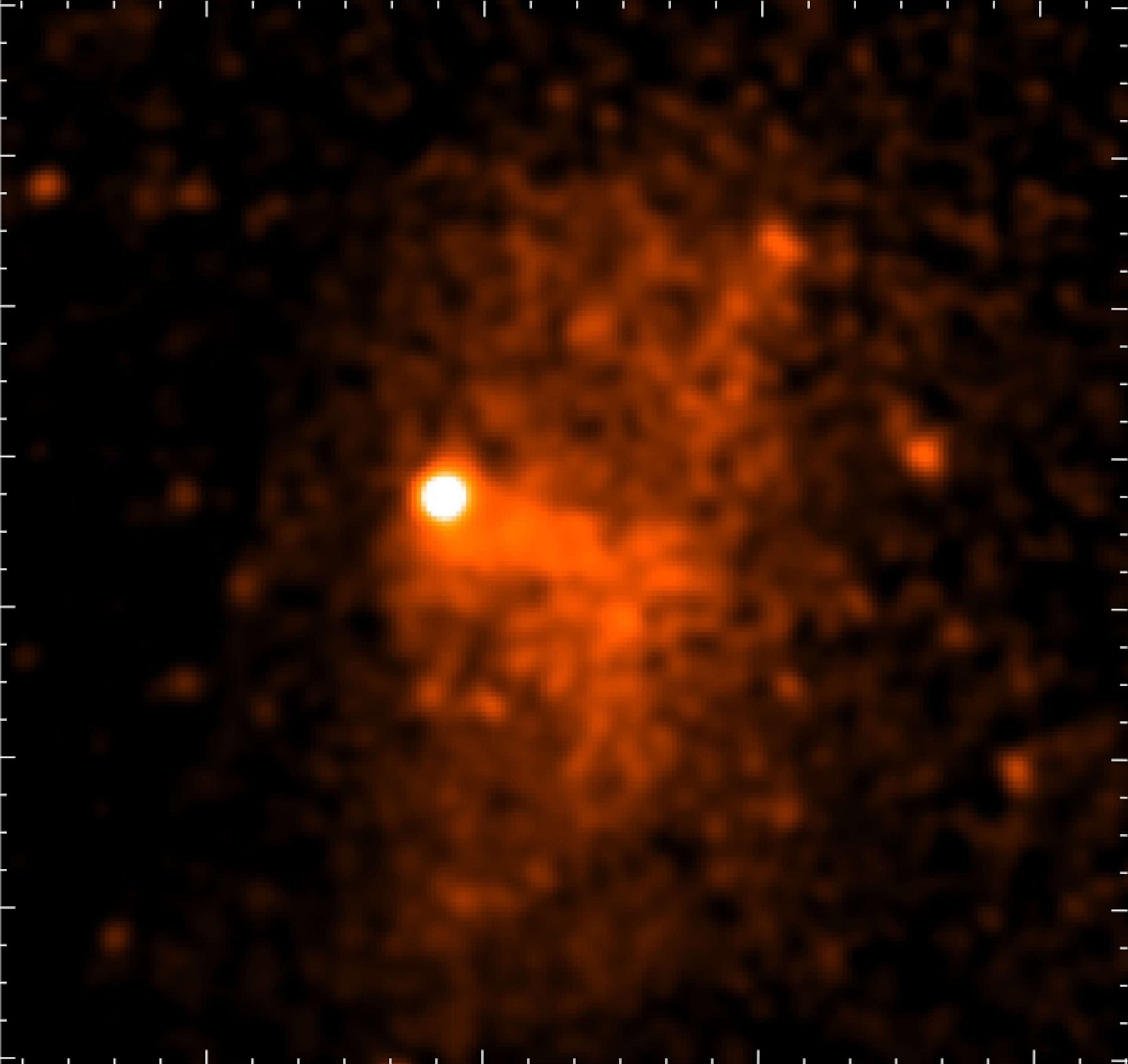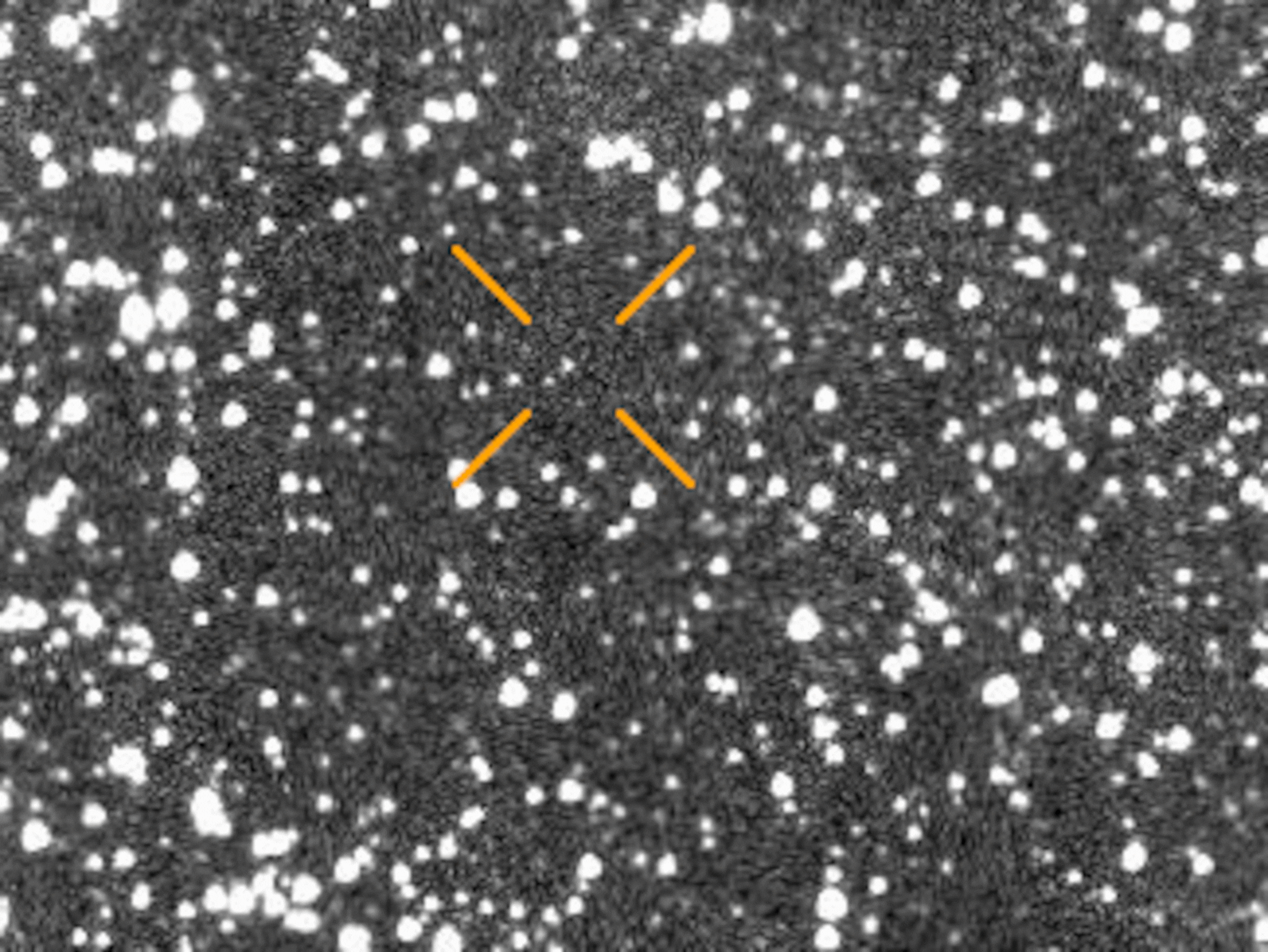
Astronomers Spy "Bullet" Galaxy Blasting Through Other Galaxies
A speedy space collision rips gas from a fast-moving galaxy.
What's New
A distant galaxy pierced another group of galaxies like a bullet, astronomers report, in a cosmic collision some 1.4 billion light-years away.
Observations from Europe's XMM-Newton X-ray space telescope reveal that the bullet galaxy blasted through a galaxy cluster called Abell 4067 at 814 miles (1,310 kilometers) per second.
That bullet weighs about 200 trillion times as much as Earth, report astronomers Gayoung Chon and Hans Böhringer of the Max Planck Institute for Extraterrestrial Physics in Garching, Germany. Gassy debris trails from the collision, they write in an upcoming Astronomy & Astrophysics journal study.
The cosmic collision turned up in a survey of 900 distant galaxy clusters, so finding the merger "is a nice surprise," Chon says by email.
Why It Matters
When clusters of galaxies collide, scientists get an unusual glimpse into how these cosmic smash-ups unfold, including how much these distant galaxies actually weigh.
In 2008, observations of an even faster moving "bullet cluster" offered cosmologists proof that dark matter, a mysterious and unseen substance that makes up most of the total matter in the universe, rings most galaxies. While the bullet galaxy left a trail of hot gas, the unseen bulk of its mass—dark matter—continued on a separate trajectory.
Since the new bullet cluster is less massive and the merger slower, weighing its dark matter could be harder, Chon says.

The Big Picture
The newly discovered bullet cluster should help answer questions about the mass of distant galaxies and how they behave when they smash together. (Of course, since light takes time to travel across galaxies, the smash-up at Abell 4067 actually happened 1.4 billion years ago, and we're just seeing it now.)
Our own Milky Way galaxy likely faces a galactic collision with the nearby Andromeda galaxy within four billion years, meaning that someday, these mergers will be more than a matter of academic interest. (See: "Milky Way Has 4 Billion Years to Live.")
What's Next
Closer observation of the "bullet" should help reveal how much gas surrounds the ancient, compact galaxy, the scientists suggest. And they hope to precisely image the shock wave spawned by the collision.
What's more, Chon says, "we have just been granted a seven-times-deeper XMM[-Newton] observation of this object, so we will have even more details on the merger physics."
Follow Dan Vergano on Twitter.





